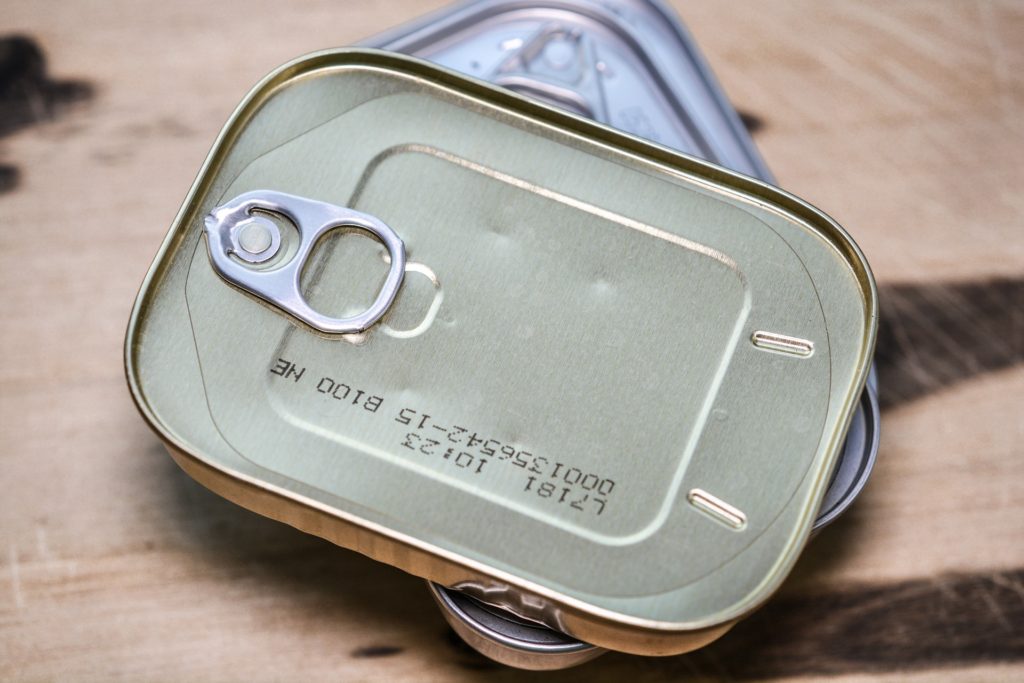
Canning is a food preservation method wherein severe heat treatment achieves commercial sterility, making the product being treated shelf life stable. The process of commercial canning traced its roots back during the French Revolutionary Wars. The French were waging wars. But there was one big problem for their soldiers—how to keep their food from going bad. And existing preservation methods such as drying, smoking, or fermenting were not a sure thing either. So in 1795, the French government, determined to spread their influence globally, offered a prize of 12,000 francs to whomever could come up with a process that would extend the shelf life of food.
Nicholas Appert, a confectioner, answered the challenge. He spent the next 14 years of trial-and-error to develop a preservation method that would work for a wide range of foods. In 1809, his hard work and perseverance paid off with a preservation method that worked. It involved treating food, placed in corked-glass jars and sealed in wax, with heat above boiling point. He used an autoclave of his own design during his experiments. To make sure the method truly worked, he experimented with about 70 different types of foods. He preserved fruits, vegetables, soups, meats, and dairy products. For his work, Appert is credited with the thermal process of canning (vacuum bottling technique).
And then the following year, 1810, Peter Durand, an English merchant and inventor, received a patent for a similar preservation method, but this time using tin-plated cans. Appert avoided using tin-plated cans in his experiments because of the poor quality of French tinplate. Durand’s method would become the basis of the modern-day process of canning foods.
In this article, we’ll discuss canning further, and define commercial sterility.
Let’s dive right in!
WHAT IS CANNING?
Canning is a food preservation method that involves heat treating food in hermetically sealed container to inhibit the growth of pathogenic and spoilage microorganisms. According to the Food and Drug Administration (FDA), hermetically sealed container refers to any container that is designed and intended to be secure to prevent the entry of microorganisms and maintain the commercial sterility of its contents after processing.
Commercially, the method of canning is similar to that of Durand’s patent. Food is placed inside the body or cylinder of a can, the lid is sealed, and the can is heated in a commercial industrial pressure cooker called a retort. The heating temperatures vary, from 241°F (116°C) to 250°F (121.1°C). The length of heating also varies. This depends on many factors, including the physical state and pH (acidity) of the food, the size of the container, and the heat resistance of the enzyme or microorganism that may be present in the food.
You might also like: Home Canning: The Importance of pH
Clostridum botulinum bacteria are commonly found in closed cans or bottles. The spores they produce are heat-resistant and capable of growing in low-acid (pH >4.6). Hence, heat treatment of at least 121.1°C in 3 minutes is necessary for canning low-acid products. Doing so achieves a 12-decimal reduction of the microorganism.
In order to facilitate the assumption that the rest of the product will be sterilized when the slowest heating section is sterilized by subjecting it to the necessary time-temperature profile, the processing conditions should be applied to the slowest heating point, referred to as the “cold point.”
If properly carried out, canning achieves two objectives: commercial sterility, and extended shelf life of the product (at least 6 months).
COMMERCIAL STERILITY
Commercial sterility refers to the degree of sterilization at which toxin-forming and pathogenic organisms have been destroyed. This also includes all other types of organisms that, if present, could thrive in the product and cause spoilage under normal handling and storage conditions. In most cases of complete sterilization, there is deterioration in terms of quality and nutrients. Hence, commercial sterility is achieved in practice. This way, the product undergoes optimal processing. This way, it will neither spoil, cause harm to the consumer while retaining the organoleptic properties and nutrients.
It is important to carefully calculate the time-temperature process needed to make a product commercially sterile using established procedures.
You might also like: UHT And Pasteurized Milk: What’s The Difference?
Canned foods have a shelf life of at least 6 months. Most commercially sterile food products that we find in the market have a shelf life of 2 years or even more. And if the product deteriorates, it is due to textural and/or flavor change that occur over time, not due to microbial growth.
Now the thing is commercially sterilized foods may still contain a small number of heat-resistant bacterial spores. Under normal conditions, these spores may be unable to grow. But if isolated and placed in an environment of good conditions, they could be shown to be alive.
MAKING FOOD COMMERCIALLY STERILE
The type of microorganism that is determined to contaminate the raw material determines the level of survival. The microbial load on raw materials must be kept at a low level through hygienic handling and preparation techniques in order to achieve commercial sterility. Failure in these procedures would raise the initial number of cells. And because of the logarithmic rate of destruction, the incidence of spoilage after processing would increase.
As earlier mentioned, Clostridium botulinum is an organism of concern for low-acid foods. Processing of canned foods is based on the survival probability for Clostridium botulinum of 10-12 or one survivor in 1012 cans. A strain of C. sporogenes known as PA 3679, is the organism that is most usually used to describe low-acid food spoilage by mesophilic spore formers.
Many companies do thermal activation of 10-2 for thermophilic spore formers, while 10-5 for mesophilic spore formers. And the processing time depends on several factors. These include the bioburden of the most heat resistant bacteria, spoilage risk involved, and the food’s ability to support the growth of potential contaminating bacteria.
In canning factories, the levels of commercial sterility are made sure before the product is released for retail sale. To do this, accelerated shelf life testing is performed at random. Accelerated shelf life testing is one form of shelf life testing in which the product is stored under elevated stress condition to accelerate its rate of deterioration.
References:
V. Vaclavik, E. Christian (2014). Essentials of Food Science (4th edition). Springer.
P. Fellow (2000). Food Processing Technology (2nd edition). CRC Press.
M. Shafiur Rahman. Handbook of Food Preservation (2nd edition). CRC Press)


